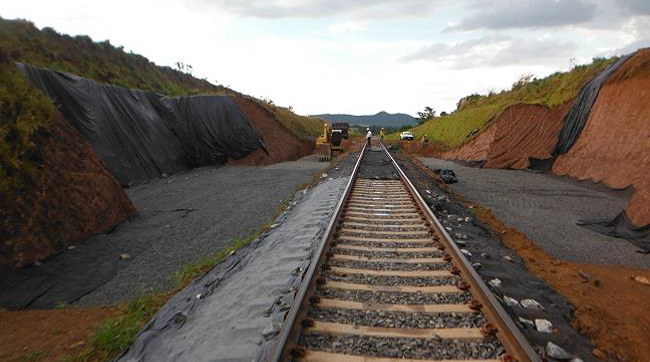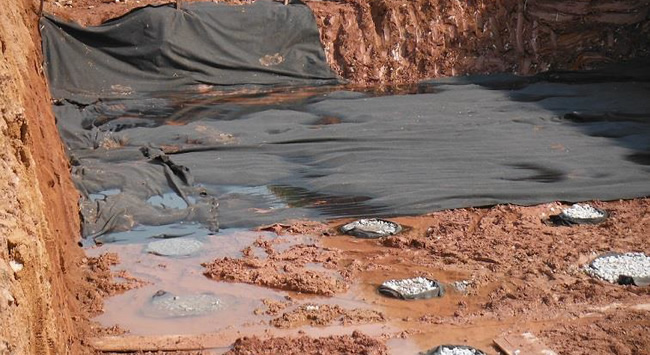Cobramseg is a biennial geotechnical engineering event in Brazil that combines multiple national and international engineering conferences. It’s one of South America’s most important engineering gatherings. At the 2016 edition, Ana Carolina Portela Costa, Ary Franck Baia Cordeiro, Leonardo Campos Dias, and Julián Buriticá García of Dinamiza Consultoria e Engenharia Ltda and Renato Pinto da Cunha of the University of Brasília (UnB) caught our attention with their presentation of a case study on the use of geotextile-encased stone columns. Specifically, they looked at how these geosynthetic solutions improved the bearing capacity and stability for retaining walls in a railway passage.

We thank Bruno Pedroni, editor of Geosynthetica.net.br (our Portuguese-language, Brazil-market-focused publication), for arranging this synopsis. Bruno has also provided a link to the full case study (in Portuguese) in his article.
GEOTEXTILE-ENCASED STONE COLUMNS
The two railway passage retaining walls were designed with metallic strip reinforcement. The project, which was carried out in the northern part of the state of Goiás in Brazil, used crushed stone columns encased by geotextile in order to increase the overall system’s bearing capacity and enhance its global stability.

Geotechnical analysis on the site found that the site soils, at a depth of 3m from the natural terrain, offered an average load capacity of 280 kPa.
According to the calculation of vertical tension applied by the structure of the embankment on the foundation, the mechanically stabilized earth wall system could require up to 293 kPa. To increase the load capacity and avoid excessive deformation, 2.5m of original soil was recommended to be removed and replaced with higher quality fill.
Additionally, a foundation improvement solution was designed into the system to maximize safety.
The geotextile-encased stone column solution was specified at a depth of up to 4m, at which point it could provide a high load capacity (roughly 429 kPa). In this particular case, the stone columns were designed to contribute to the transfer of the rail line’s fluctuating vertical stresses to deeper layers.

The research team found that the geotechnical solution of geotextile-encased stone columns greatly improved the stability of the railway passage infrastructure.
A link to the original paper (in Portuguese) is provided at Geosynthetica.net.br.











